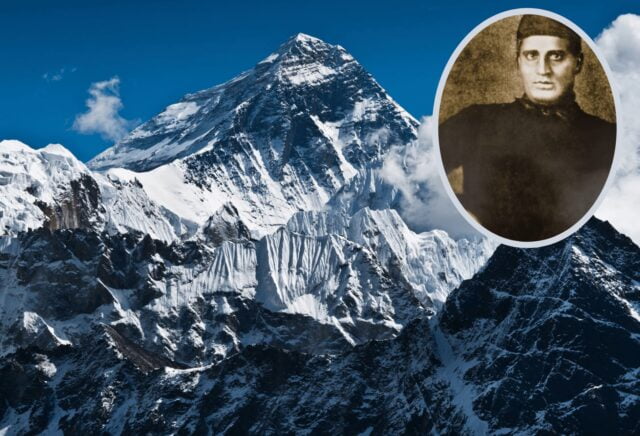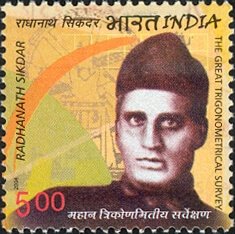From a digital perspective, our world may have become a compact space but geographically, it seems infinitely big as it constitutes a countless number of jaw-dropping and impressive spectacles scattered all across the world.
Mount Everest is one of the multifarious and startling gifts of nature to us. The majestic mountain, with a current official elevation of 8,848 m (29,029 ft), is the world’s highest mountain above sea-level.

This is something that is very well known to us all. But what we are highly likely to be oblivious to is the unheard history behind the naming of this sky-scraping peak.
The Discovery Of The Highest Peak
During the early 19th century, a survey called ‘Great Trigonometrical Survey’ was initiated by William Lambton, a British army officer, and backed by the sponsorship of the East India Company.

This survey was classified as “one of the most stupendous works in the whole history of science” for all the compelling reasons. The surveyors had set their sights on measuring the entire Indian subcontinent, hence indulging hundreds of people. Spanning 70 years, the survey informed the world about the heights of the Himalayan summits of Everest, K2, and Kanchenjunga.
Also Read: What Is The Unique Bird Language Of Turkey And Why Is It Worrying Its People?
Radhanath Sikdar: The Explorer
Among the hundreds of surveyors, there was Radhanath Sikdar, an Indian Bengali mathematician from Calcutta (Kolkata).
He was the one only who made incredible use of the data collected during the survey and consequently made an announcement to have discovered the highest mountain in the world in March 1856.

Sikdar had studied mathematics at Kolkata’s Hindu College (presently known as Presidency University) and was honourably known as a computer, given his outstanding calculative works.
What Led To The Name ‘Mount Everest’?
Though Sikdar proved his mettle through his work and the results, he did not get the recognition that he very well deserved.
Today, the mountain is known by Chomolungma in Tibet, which translates to ‘Mother Goddess of the World’, and by Sagarmatha in Nepal, which has various meanings.

But the most commonly used and globally recognised name of the mountain is Mount Everest. This name was dedicated to British surveyor Sir George Everest who was one of the Surveyor General of India.
Interestingly, Sir George Everest himself never wanted the recognition and rather was all praises for the Indian mathematician. He used to quote Sikdar as- ‘a hardy, energetic young man, ready to undergo any fatigue and acquire a practical knowledge of all parts of his profession.’

George was not in favour of the mountain being given an identity inspired by him as he believed that neither the name ‘Everest’ could be written in Hindi nor could be pronounced by the native people of India.
But, all of his objections were swayed and the year 1865 saw the world getting introduced to its highest mountain by the name ‘Mount Everest’.
Radhanath Sikdar’s Recognitions
On 27 June 2004, the Department of Posts under the Government of India, launched postal stamps to memorialize the establishment of the Great Trigonometrical Survey in Chennai, India on 10 April 1802.

The stamps feature Radhanath Sikdar, hence giving due credit to the mathematical genius for his immortal findings.
Image Credits: Google Images
Sources: BBC, The Guardian, Wikipedia, History
Find The Blogger: @ELadki
This post is tagged under: who measured mount everest, how was mount everest named, who is mount everest named after, naming of mt everest, highest mountain in the world, highest peak in the world, british, indian mathematician, work of indian surveyors, east indian company, colonialism, british india, wrongs of british rule in India
Other Recommendations:
https://edtimes.in/the-story-of-dhanushkodi-the-ghost-town-of-india/



































I am very impressed with your content, being an Indiaphile.
My highlight in life, aside from my marriage, was serving in the Peace (Shanti Sevak) in India in the 60s in Sholapur, Maharashtra.
Keep the articles flowing.
Aloha,
Tondalaya C. Gillespie